
It’s time for another entry in FNY’s Cross Streets of NYC series…
I’ve done them piecemeal in the past, but I’ve already posted 20th Street, 22nd Street, 17th Street, 10th Street, 6th Street and 18th Street in this batch, and 14th Street as well in autumn 2019 with more to follow. Before the Great Infection, I spent a number of Saturdays (and some Sundays too) crisscrossing Manhattan via its numbered streets. Over the years, I’ve done this quite a few times and I was amazed at how much stuff I missed and how much material I knew about and posted here and there, but never really formalized or categorized. Eventually I might make these “crosstown” posts their own separate category.
On a chilly February day I walked 25th Street from east to west. 25th runs from 11th Avenue to the FDR Drive, interrupted only by Madison Square.

Just west of the FDR Drive East 25th Street encounters the north end of Asser Levy Place.
For a short street, it is unusually wide. It was originally laid out as part of Avenue A; parts of the avenue run intermittently from the East Village north to Harlem and are known as Avenue A, Asser Levy Place, Sutton Place, York Avenue, and Pleasant Avenue depending on what part of town you’re in. Asser Levy was one of the first Jews in the New Netherland, arriving from Brazil in the 1650s.
The centerpiece of Asser Levy Place is a magnificent bathhouse constructed in 1908. In the mid-to late 1800s, NYC’s population increased dramatically in the era before running water and workable plumbing — good hygiene was an unattainable dream and communicable disease ran rampant. Thus arrived the idea of pubic bathhouses; they began to appear in 1901. The 23rd Street Bathhouse (later Asser Levy Bathhouse) was designed by architects Arnold W. Brunner and William Martin Aiken and the design was based on those of Roman baths of the early Anno Domini period. It was honored as a NYC Landmark in 1974. It now serves as a recreation center and swimming pool in the warm months.
Probably the largest building in NYC based on a Roman bath was the first Pennsylvania Station that stood from 1910-1963.
As Sergey Kadinsky explains, Asser Levy Place was converted to a pedestrian-only concourse in 2014.

I didn’t consider the 20-story co-op building at 245 East 25th at 2nd Avenue to be worth getting a photo, but I like its name, Spruce Ridge House, as well as the Garamond typefont on the sidewalk entrance awning.
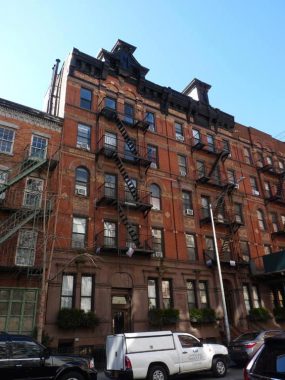
I just stopped and stared at this trio on the south side of East 25th, #210, 212 and 214. The architect went all out and festooned the brickwork with gold leaf and terra cotta eye poppers like monsters, angels, cherubs, profiles, bearded guys and be-boobed caryatids. This sort of thing drove architects like Mies Van Der Rohe and Le Corbusier nuts and they set about designing masonry and glass boxes devoid of ornamentation. As a group they are called the Centennial Apartments (presumably built in 1876).
Pubs dominate the 3rd Avenue and East 25th intersection, with a (presumably) defused bomb at AWOL; Dog & Bone is a British-themed pub specializing in hot dogs (presumably a step up in quality from Rudy’s in Hell’s Kitchen). Fitzgerald’s joins the many unicolored Irish pub exteriors, such as Parnell’s in Kips Bay, which is red, not blue.

Quite a contrast between the 5-story walkup hosting Dog & Bone and the building behind it, #134 East 25th, the Baruch College Newman Vertical Campus (business school) completed in 2000. The building, according to NY Songlines, replaced the RCA Victor studios building where Elvis Presley recorded “Hound Dog.”

I don’t know the story behind the curved facade of #340 3rd Avenue. Further uptown, many Bronx buildings have sweeping curves on street corners.
The Lexington Building, 151 East 25th Street, was constructed in 1894 as a powerhouse for various streetcar lines running in Manhattan. It runs through to East 26th Street a block north. The building was sturdily constructed and so was considered suitable to contain heavy printing presses; thus the building also became home to several printing firms, magazine publishers (Publishers Weekly), and bookbinders, as well as light manufacturing. Today it is home to the Baruch College Newman Library.
The full scoop at Daytonian in Manhattan.
February shadows don’t make taking pictures of the “Fighting” 69th Regiment Armory easy at Lexington Avenue and East 25th.
The “Fighting 69th” regiment of the US Army, a part of the NY Army National Guard, was founded in 1849 and has had a rich history in the US Civil War and Word War I and up to today; the unit has fought in the Iraq War. Between 1917 and 1992 it was also designated as the 165th Infantry Regiment, and its headquarters are still located at the 69th Regiment Armory at #68 Lexington Avenue fronting the entire avenue between East 25th and 26th Streets. A substantial memorial to the “Fighting 69th” is found in Calvary Cemetery in Queens.
In its early days the regiment consisted nearly completely of Irish immigrants. Its motto, “Gentle when stroked – fierce when provoked” refers to the representations of Irish wolfhounds found on the regiment’s crest and dress cap badges in the 1860s. In some ceremonies, the regiment’s officers and senior non-commissioned officers carry shillelaghs as a badge of rank.
The armory, built from 1904-1906 by the architectural firm of Hunt and Hunt, does not resemble the uptown, Brooklyn, Bronx and Staten Island armories constructed in the 1800s. They were built on the model of medieval-style fortresses, while Hunt and Hunt went for a then-contemporary Beaux-Arts look, even adding a French Second Empire-style mansard roof, originally popular in the 1870s.
As early as 1913 art shows were presented here, including the International Exhibition of Modern Art Armory Show, where Marcel Duchamp’s famed “Nude Descending a Staircase” was first shown.
Names of prominent battles of the Civil War and WWI are inscribed on the 25th and 26th Street ends, using the “v of importance”
Much more info is found at the armory’s website, which is charmingly low-tech.
In 2014, I went by on a better day for pictures.
You wouldn’t think that the Quakers would have anything to do with #130 East 25th, a seven-story brick building constructed in 1916, with quirky and vaguely Mayan ornamentation that includes buffalo heads, snakes and a pair of watchdogs above the entrance. It was originally constructed for merchant B.W. Mayer and later became an electrical workers’ trade school. Since 1994, the Society of Friends has run a care facility for people with AIDS here.
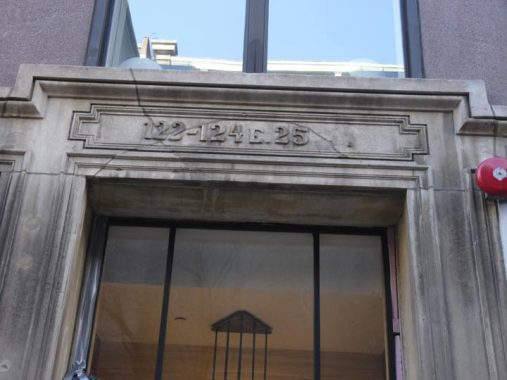
I liked the house numbers above the door at this address.


#118 East 25th is also unusual, with a facing made completely of glass blocks and terra cotta fools’ heads.
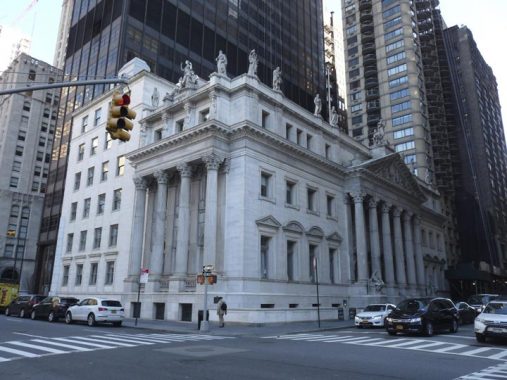
The New York State Appellate Court Building at East 25th and Madison was built 1900 in Italian Renaissance style (James Brown Lord, architect); much care was lavished on the building’s limestone exterior and interior art, including statues of famous lawgivers and civic virtues.
On the Madison Avenue side, the sculptures, each by a different artist, are
Confucius, the great Chinese philosopher
“Peace” allegorical group
Moses
On the 25th Street side:
Zarathustra, the Persian founder of Zoroastrianism
Alfred the Great of England
Lycurgus, the legendary lawgiver of Sparta
Solon, the Athenian statesman, lawgiver and poet
Louis IX (1214-1270), the only sainted king of France
Manu, a Hindu deity
Justinian, the great Byzantine emperor
Vacant, formerly Mohammed. This was removed by request because in Islam, the Prophet is not supposed to be represented in art.
The allegorical figures of Wisdom and Force guard the Corinthian-columned East 25th Street entrance, while Justice faces Madison.
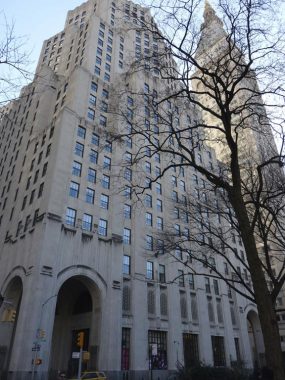
11-25 Madison Avenue: Built in 1929 as the Met Life North Building, which is why it and the Met Life tower at East 23rd are connected by skyways. One hundred stories were planned, but the Great Depression stopped construction at 29, leaving the building looking like the base of the Tower of Babel. Expansions took over entire the block by 1950. Designed by Harvey Wiley Corbett, it’s considered an Art Deco masterwork– particularly the amazing corner arcades. Price Waterhouse, Sony, and Credit Suisse are tenants here.
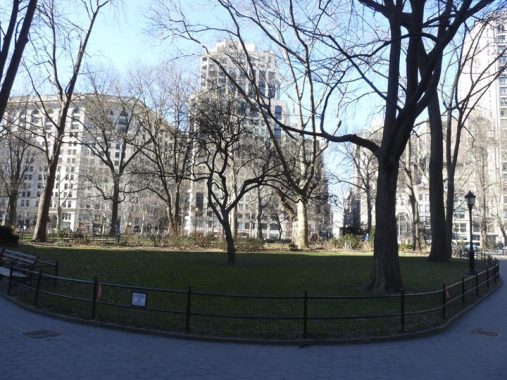

Madison Square became the pleasant oasis it is now around 1870. At the time of the Revolution it was a swampy grassland traversed by a meandering stream, abounding with game. Later, it became a paupers’ burial ground. By the first decade of the 19th Century, a military outpost was established as part of the defenses of the lower city at the junction of the Eastern Post road and Bloomingdale road – now Broadway – near the present intersection of 5th Avenue.
In 1811 the famous NYC Commissioners’ Report –celebrated in 2011 with an exhibit at the Museum of the City of New York — officially designated the street layout of Manhattan Island, and a “Parade” was laid out between 23rd and 34th Streets and between 3rd and 7th Avenues. A few years later the Parade was greatly reduced in size and named for James Madison, the 4th President. In 1844 the square was again reduced to its present size and the Post Road was closed. Madison Avenue itself was opened north of 23rd Street in 1836.
The greatest naval commander of the Civil War, David Farragut’s father was a Spanish sea captain who fought for the colonies in the Revolution. After his mother died, his father allowed the boy to be adopted by U.S. naval officer; Farragut accompanied him during the War of 1812, and Farragut obtained his first command during the Mexican War in 1848.
In 1862, when Farragut’s Union fleet took New Orleans, he was made a rear admiral. Fifteen months later, Farragut sailed to Mobile Bay to take on one of the Confederacy’s most indispensable ports.
At the height of the battle for Mobile Bay, Farragut was lashed to the mast of his ship so he could see further into the distance. Noticing that the bay was booby trapped with mines, Farragut chose to enter the bay anyway, shouting “Damn the torpedoes! Full speed ahead!” In the naval parlance of the day, a mine laid at sea was called a torpedo. The North took Mobile Bay.
Congress created the rank of vice admiral for Farragut, and he later became full admiral. He died in 1870.
Farragut is memorialized in sculpture by Augustus St. Gaudens on a pedestal by Stanford white, dedicated in 1881. He is accompanied by two figures representing Loyalty and Courage, as well as by two dolphins. Sculptor Saint-Gaudens, who also created the statues of Peter Cooper at Cooper Square and General Sherman at Grand Army Plaza, made extensive use of lettering that recounts Farragut’s career. The monument is regarded by experts as bringing revolutionary change to public sculpture–combining figure, pedestal, setting into a stylistic unity.
In 1881, the Farragut Monument was unveiled by a retired sailor…the same one who had tied Farragut to the mast during the Battle of Mobile Bay. The Farragut Memorial was first located at 5th Avenue and 26th Street. In 1935 it was moved to its present location.
Commodore-Criterion, manufacturer of Christmas decorations, is on the site of Worth House, a hotel that by 1900 housed the Berlitz School of Languages. The present building, a Buchman & Kahn design from 1918, was the flagship store (with science museum) of the A.C. Gilbert Company, a toy company that made the Erector set, radioactive chemistry sets and American Flyer model trains.
This 51-ft. tall obelisk, in a plaza known as Worth Square formed by the three-way intersection of Fifth Avenue, Broadway and 23rd Street, was dedicated in 1857. (Worth had been buried temporarily in Brooklyn before being moved to the Manhattan monument.) It is the second-oldest monument in Manhattan (an 1856 equestrian statue of George Washington in Union Square is the oldest) and, along with Grant’s Tomb, one of only two monuments in the city holding the remains of the person being honored. It is tied as the smallest cemetery in NYC with the Amiable Child Monument near Grant’s Tomb: both have one interment.
The south face of the obelisk features a bas-relief depiction of the general on his horse, and an elaborate trophy with crossed cannons, armor, two eagles, flags and a variety of weapons. The east face has the Latin inscription “Ducit amor patriae” “Love of country leads me.The north face bears a plaque reading, “Under this monument lies the body of William Jenkins Worth, born in Hudson, N.Y., March 1, 1794, died in Texas, May 7, 1849. The cause of death was cholera. The west face bears the dedication date along with the exhortation to “Honor the Brave.”
All four faces of the monument’s shaft list significant battles or postings from Worth’s career. The city of Fort Worth in Texas bears his name.
The monument was designed by Hartford’s James Batterson, whose firm supplied a large number of Civil War monuments in Connecticut.
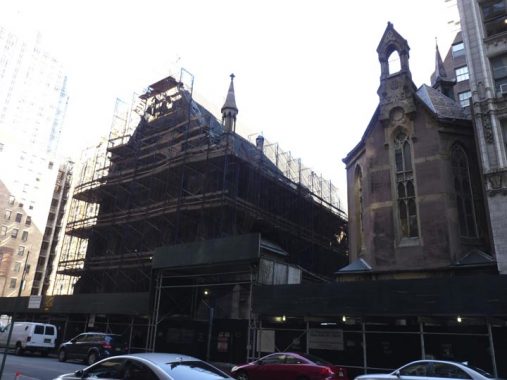
The Serbian Orthodox Cathedral Church of St. Sava was constructed on West 25th just west of Broadway as a northern branch of Trinity Church between 1850-1855 and is yet another work by famed ecclesiastical architect Richard Upjohn, who had designed downtown’s Trinity Church, which was dedicated in 1846. It was sold to the Serbian Orthodox Church in 1943 and was rededicated with its present name in 1946. Outside the church are busts of Bishop Nikolai Velimirovich, who was instrumental in founding the parish, and Nikola Tesla, the inventor and entrepreneur. Tesla was of Serbian descent and was born in the Austrian Empire; his father was a Serbian Orthodox priest.
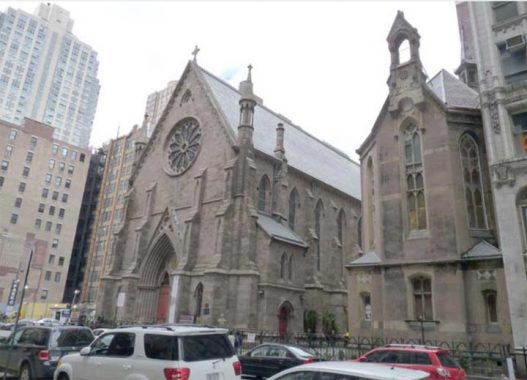
The church was destroyed by fire the first week of May 2016. The hope of the parish is that the church can be rebuilt in the same style that Upjohn designed it in the early 1850s. Scaffolding around the ruin is a hopeful sign that the rebuilding is under way.

Superior Sewing Equipment, #48-54 West 25th, is located at the south end of the Garment District and is part of a small fiefdom of its own: the Sewing Machine District.
6th Avenue, here enveloped in shadows, has completely changed since I began working on West 29th, just off 6th, from 1988-1991; back then, it was low-rise walkups and flower shops selling products from the Flower District (which is now reduced to West 28th from 6th to 7th. Beginning in the 1990s and continuing today a succession of high rise apartment towers were constructed on 6th and only a couple of the older buildings in the stretch from 23rd to Herald Square remain.
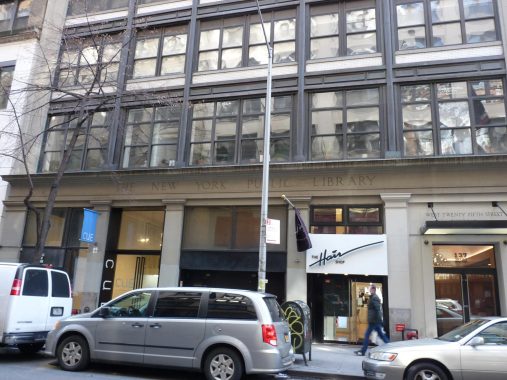
A secret at #137 West 25th between 6th and 7th Avenues: it used to be a branch of the New York Public Library.

With its multiple exterior porches, this unique house at #270 West 28th Street would be great for an outdoor version of Hollywood Squares.

Afraid I won’t finish West 25th: I was tiring and got on the C train here at 8th Avenue. Ahead is the Penn South Houses, and there is actually a Landmarked district, Chelsea West, but that will have to be shown another day.
Check out the ForgottenBook, take a look at the gift shop, and as always, “comment…as you see fit.”
7/19/20

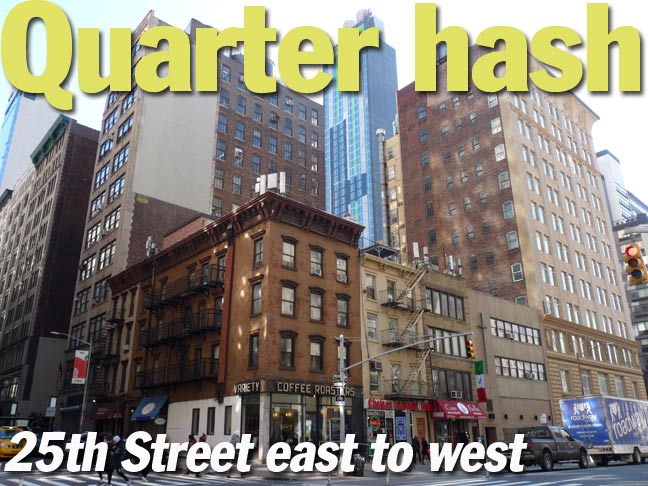
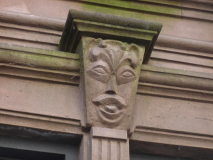
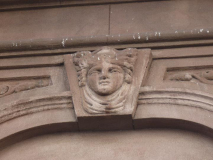
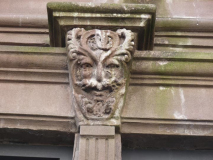
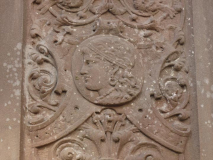
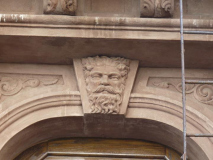
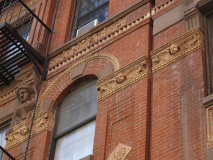
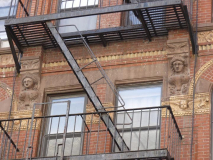
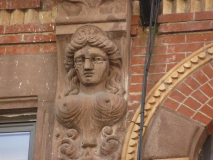
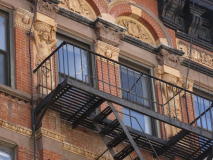
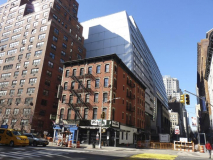
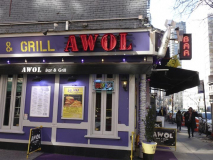
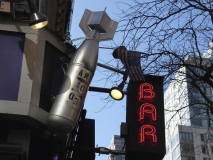
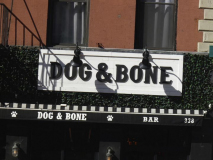
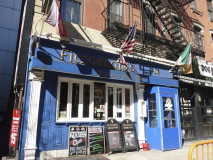
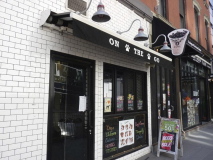
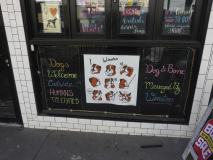
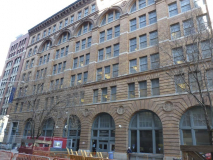
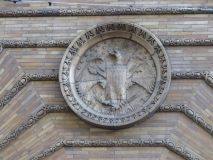
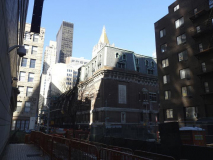

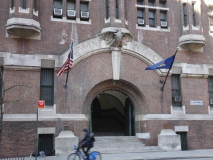


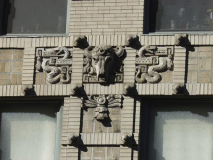
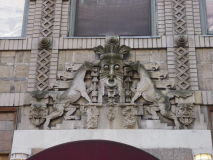
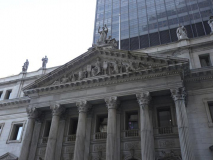
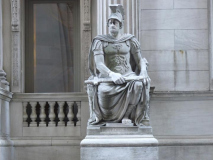
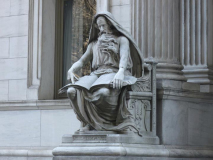
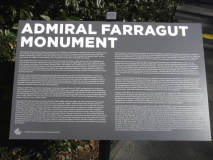
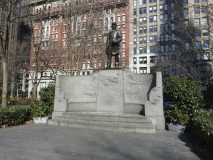
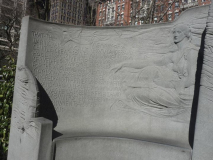
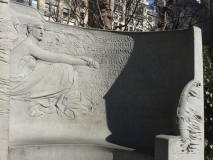
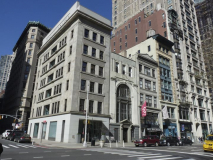
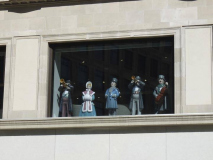
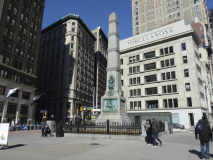

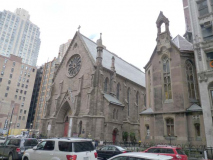
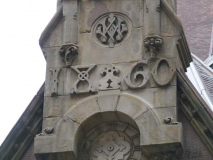
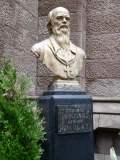
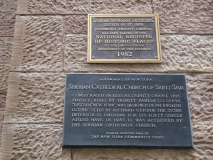
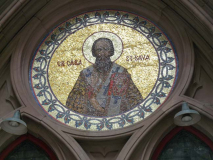
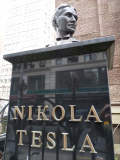
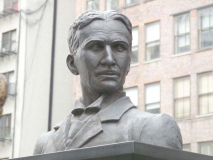

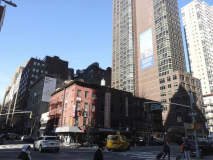
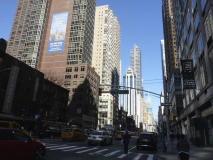
4 comments
Great commentary. When you go back to finish you may consider doubling back to the Met Life North building. The lobby is filled with
beautiful murals if I’m not mistaken.
I think Dog & Bone is cockney slang for ‘telephone’.
The New York Knicks basketball team played some of its home games at the 69th Regiment Armory between 1946 and 1960, because Madison Square Garden was not always available. The first time I attended a Knick game was in 1956 at the armory.
Source: Wikipedia article about the armory; link https://en.wikipedia.org/wiki/69th_Regiment_Armory
You might want to check your description of that big, beautiful building on Asser Levy place…very common typo there!!